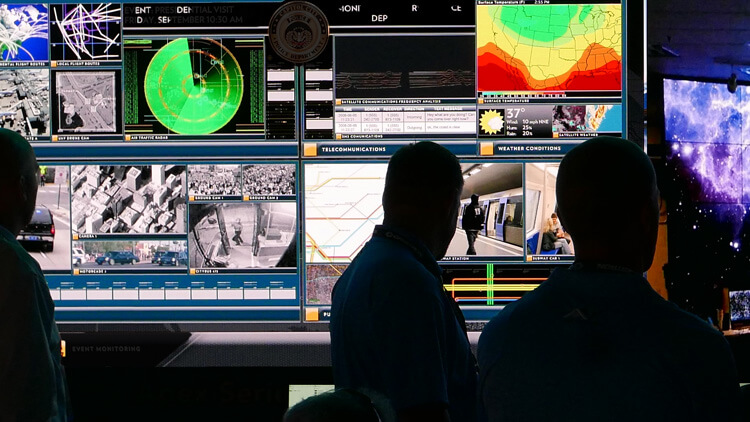Data Driven Collaboration and Control Rooms

Data. It’s tempting to simply think of it as the content that is displayed and distributed on AV systems that isn’t video. Several trends are coming together and increasing the value and need for data driven design in collaboration spaces and control rooms; the rapid access to unfathomable amounts of data, the increase in focus on remote collaboration, and the influx of interactive touch displays.
“Think of the way people work on decision making in a non-technology equipped space,” says Craig Park, principal consultant with The Sextant Group. “They use whiteboards, sticky notes, and easels. Ideas get thrown up on the wall and then some sort of decision process is applied. This includes people interacting with the sticky notes, or the ideas written on large easels, or whiteboards. The output is a set of decisions or actions that are then recorded and saved.”
Technology has evolved to duplicate this type of work process including software that emulates the use and manipulation of sticky notes, white boarding, and other activities that reflect how knowledge workers collaborate in non-technological ways. The remaining question is how data facilitate these processes and how the technology can further enhance the use of data.
A group of collaborators will seek to use data as part of their decision process now more than in years past because so much data is available with a lower access burden than ever before. Participants will have their own collected data from their area of expertise that that will want to share. Organizational data in shared network locations and data from outside the organization become a crucial part of the collaboration as well. Park states, “Decision making is more effective when it includes real data rather than solely opinion or experiential insights.”
With regards to designing collaboration spaces or control rooms, this means planning ahead for data to be a tool to be utilized in the space, not just other content. The first step is ensuring the displays and the backbone of the video distribution system are equipped to handle data. The effective use of data, however, goes beyond the displaying of it.
The design implications include understanding what data will be required in the space, where that data going to come from, how participants connect and access it, and how participants share their own data from their own device. The design and implementation of available technology is significantly more effective when these factors are considered early in the process.
Another element in data visualization is the use of data outside of static data used for decision making and collaboration. In control room applications, data can mean real time information that is part of managing and operating a process. Manufacturing control rooms will need to access productivity and uptime statistics. Industrial drilling control rooms monitor environmental conditions, equipment conditions and telemetry, and other safety data in real time. Intensive Care facilities feature telemetry stations for monitoring patients. These are just a few examples in which data is the critical content and drives the design of the room and the technology implemented.
A daily selection of features, industry news, and analysis for tech managers. Sign up below.
Data is everywhere. That kind of ubiquity can lead to a casual attitude towards the access and display of data in our collaborative spaces and control rooms. If virtually any data can be accessed in the palm of the hand in moments, then certainly a technologically equipped room can access it as well. The power of intentional data driven design is bigger than that and can unlock more effective and profitable decision making, as well as the real-time management of data driven processes.
AV Technology magazine's technical advisor, Justin O'Connor, has spent nearly 20 years as a product manager, bringing many hit products to the professional AV industry. He earned his Bachelor’s degree in Music Engineering Technology from the Frost School of Music at The University of Miami. Follow him at @JOCAudioPro. Subscribe today for The Agile Control Room newsletter sponsored by RGB Spectrum (distributed twice per month, every other Tuesday).
THE AGILE CONTROL ROOM RESOURCES
Hot Products to Consider:
MultiTaction MT Canvus Big Data Software Solution
Nureva Span Visual Collaboration Software
Sharp AQUOS Interactive Display Systems
InFocus Mondopad Interactive Displays
Case Study to Consider:
